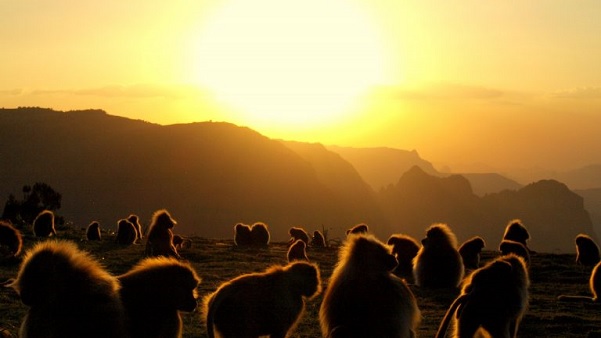
The Simien Mountains Gelada Research Project is a collaboration between the University of Michigan, Stony Brook University, Arizona State University, and the Ethiopian Wildlife Conservation Authority.
The Simien Mountains National Park in Ethiopia has unique high-altitude ecosystems and is home to some of the rarest species in the world, according to India Schneider-Crease.
Schneider-Crease is an evolutionary anthropologist who has spent over a decade studying the gelada monkeys that live in the mountains. She is co-director of the Simien Mountains Gelada Research Project (Gelada Project) and an assistant professor at the School of Human Evolution and Social Change at Arizona State University. Her research focuses on understanding the ecology of infectious diseases in geladas.
However, her latest project doesn’t focus solely on the geladas, but on the environment where they live and the communities that share that environment.
Schneider-Crease is currently leading a two-part project that brings together anthropologists, students, engineers and wildlife conservationists at ASU and from around the world to clean up plastic trash left in this UNESCO World Heritage Site and turn it into income for communities in Ethiopia.
“Our gelada research does not take place in a vacuum,” Schneider-Crease said. “Our research takes place in these really unique, endangered Afromontane and Afro-Alpine ecosystems in the Simien Mountains National Park in Ethiopia. And this work is only able to take place with the support of the incredible communities who live around the park.”
She said among the endangered species in the area are the Walia ibex, which only lives in the Simien Mountains, and the Ethiopian wolf, the world’s rarest canine.
Simien Mountains Research Project: where it all began
In 2017, the Simien Mountains Research Project team started a community clean-up program. Those who live around the park and need extra money can volunteer to help clean up the park once a month for a small stipend.
But when conflict erupted in 2020, the cleanup project and research on the geladas stopped. Over the next two years, the park was inundated with trash.
“There was an enormous accumulation of trash that we observed once the conflict ended,” Schneider-Crease said. “We saw that the ecosystems and animals were in increased contact with all different kinds of trash, which poses a disease transmission risk and can lead to erosion of the park’s fragile cliffs. In addition, trash in the national park can harm the tourist-based economy of local areas, and the return of tourists — and their trash — can exacerbate the existing situation.”
One of the largest problems is the plastic bottles left in the park by the tens of thousands of tourists every year.
Cleanup and projects
Knowing something had to be done, Schneider-Crease and Ababaw Azanaw, the chief park warden, received funding from the Rapid Response Facility to help clean up.
Schneider-Crease said the project has two parts. The first will be a massive cleanup where more than 100 people from local communities will be assigned a section of the park, and they will collect data on how much and what type of trash is found as they clean.
“The team is also working with a fabrication engineer in Addis Ababa named Gizish Mebratu to build solar compactors that will help remove nonplastic trash from the park in an eco-friendly way,” she explained. “Our regular cleanups (funded by the Beagle Charitable Foundation) will continue to pay local folks to clean the trekking paths and scenic routes on a monthly basis.”
Continue reading this story on ASU News
